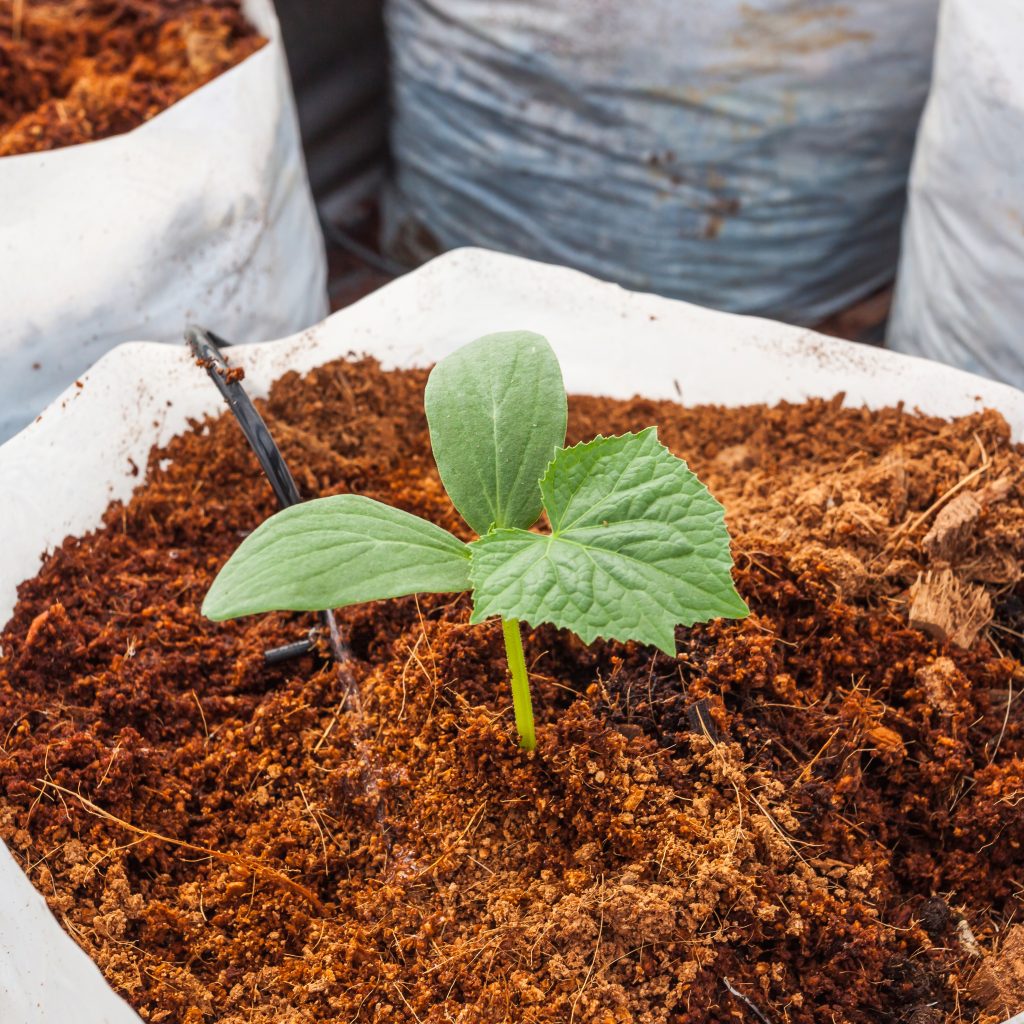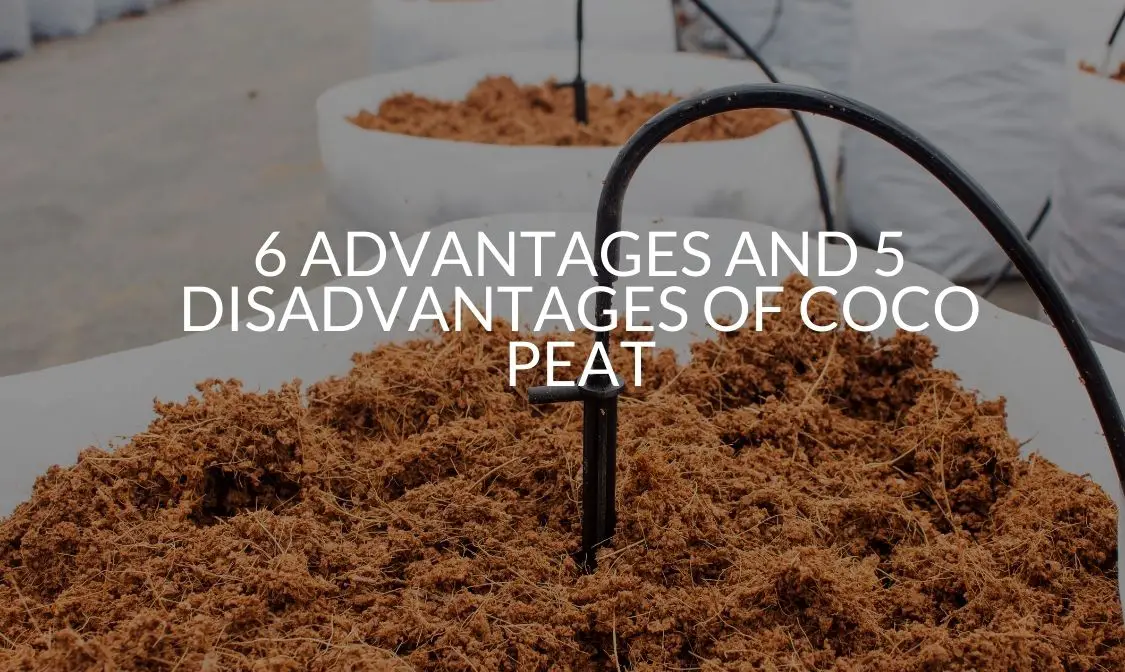You may have heard of a growing medium that is quickly gaining a lot of popularity in Hydroponics circles. We’re talking about Coco Peat, of course, and these days it seems that everyone is talking about it. Today we’re going to explore this growing medium in a little detail so that you can get the inside scoop on Coco Peat’s advantages and disadvantages.
Let’s start with what it is, then we’ll go into what it can do, and give you some popular alternative mediums as well!
What Is Coco Peat?
Also referred to as Coir Pith and Coco Coir, Coco Peat is a light, spongy, and somewhat cork-like material found inside a coconut husk that holds together the fibers of the coir. In the 90s it was discovered to have excellent multipurpose properties as a growing medium and as such, its use and value have been growing ever since.
Of late it has become especially popular in hydroponics circles, where it is considered quite comparable and to some growers, even superior to peat.
What Are the Advantages of Coco Peat?
There are a number of reasons why Coco Peat is becoming the medium of choice for many hydroponics setups. Many now favor it over its main competitor, peat, and when you take a look at the perks it’s quite easy to see why this might be so. Let’s take a look at the primary advantages of this rising-star of mediums.
Increased Water Capacity
Cocopeat can increase the water holding capacity of your potting mix, at the same time that it also increases the porosity of your soil. This means there is little worry of over or underwatering your plant. Being hydrophilic, it is also quite easy to rewet, absorbing water quickly.
Very Little Is Required
A little Coco Peat goes a long, long way. Coco peat has 3 variables that allow for this, those being a high cation level, excellent water absorption, and the high porosity. This means that you don’t have to add large amounts of it to benefit the quality of your mix.
Trichoderma
Coco Peat helps to promote the growth of good bacteria and fungi due to the natural Trichoderma which it contains.
It’s Compact And Easily Shaped
Coco Peat may be compressed quite easily to 1/5 or even a little less than its original volume, which makes it quite easy to transport or to store. Further, you can take advantage of this by pressing your Coro Peat into desirable shapes as-needed.
Superior Nutrient Absorption
Another reason for Coco Peat’s popularity is the high cation exchange factor that comes with it being an organic medium. This means that nutrients are basically released or absorbed as-needed and this is a definite perk.
Renewability
Coco Peat is a by-product of coconut harvesting and before it’s properties were known, it was simply removed from the husks and discarded as waste. As it is a natural part of procuring coconuts, it’s a resource that’s quite available and completely renewable.

What Are the Disadvantages of Coco Peat?
As with any growing medium, there are a few caveats if you desire to use Coco Peat as a part of your potting mix. We’ve taken the liberty of collecting these into one category so that have a more complete picture just in case you’d like to try this medium for yourself.
Not All Coco Peat Is the Same
While it may be used in hydroponics and other forms of farming, not all Coco Peat is the same. It has to be of a certain quality in order to be beneficial for hydroponics but due to its high demand, unscrupulous or simply ill-informed vendors have been selling inferior Coco Peat on the market.
Prone to Creep
Coco Peat needs to be used fairly quickly, typically within a few months of its production. If it is not, then it is quite prone to creep and this can result in the Coco Peat being notoriously difficult to rewet.
Poor Plant Support
The same high porosity which makes Coco Peat desirable also has a caveat of its own. Coco Peat is not going to be able to support the weight of many plants on its own. This is not necessarily a dealbreaker, as a number of mediums require a little reworking to properly support their plants but it is still a disadvantage in comparison to some other mediums.
The Salt Factor
Coco Peat contains a number of salts which render this medium unsuitable for recycling hydroponic systems. This also means that you must be careful to only use high-quality Coco Peat to help minimize the salts involved and also that you must take care in nutrient adjustment by factoring in this natural variable.
Prices Are Rising
As we live in the information age, knowledge of Coco Peat has become quite common all over the world. This means, of course, increased demand and when there is increased demand then the price for something will always go up. This is slightly offset by the fact that very Coco Peat is needed in many mix scenarios but it is still an important consideration.
What Are Some Good Alternatives?
Of course, you don’t have to use Coco Peat if you don’t want to. There are a number of other growing mediums that you can use and each have some excellent qualities that you can take advantage of. Take a look at the selection below and you can get a quick profile of each.
Hydroton Expanded Clay pellets
An extremely popular growing medium in the market is Hydroton Expanded Clay Pellets. These are basically little clay sphere specially expanded to make them porous. They have some great advantages, such as being PH neutral, having a good oxygen and water balance, and the fact that they a very negligible amount of nutrients into your carefully managed system.
They are reusable and retain their shape, providing an excellent support for plants, but they do come with caveats as well. Mainly in the fact that they weight a bit more and that they can drain fairly quickly, so they must be well-observed to avoid any chances of roots drying out.
Rockwool
Rockwool is another popular medium produced by actually melting rock so that it may be spun and shaped into thin, usable fibers. Rockwool retains water quite well, provides an excellent oxygen balance, and it’s also completely sterile. It has some unfortunate caveats, however, and as such it is rapidly declining in popularity.
First off, it is going to require some soaking before use, as Rockwool has a naturally high PH level and as a by-product of its manufacture, failing to soak it can expose one to harmful dust and fibers. Further, it’s not really going to degrade, so while it is reusable it’s not very disposable.
Starter Plugs
Starter Plugs are gaining a lot of popularity and these little gems are essentially a spongy form of organic compost and they are excellent for planting and transplanting seeds to incorporate in a hydroponic matrix. They are quite sustainable and easy to use.
Starter Plugs have their own caveats, of course, chiefly in that they are only really good for cloning or for starting your seeds and they are a little more on the pricey side than some other available mediums.
Wood Fiber
A growing medium doesn’t have to be fancy to be effective and wood fiber is a great example of this. It’s organic, for one thing, and it’s going to retain a stable structure for a goodly period of use as well. Some studies have even indicated that using wood chips as your medium reduces plant growth regulator factors, resulting in larger plants.
On the downside, decaying wood may attract insects, and there are also sterility considerations if you decide to go with this medium.
Perlite
Perlite is the final alternative medium on this list and it’s well-known, as it’s been around a long time. Essentially air-puffed volcanic glass, Perlite is extremely porous and as such, it is great for retaining superior oxygen levels.
On the downside, it’s porosity also means that it is quite lightweight, so it’s not going to be a perfect fit for every hydroponics scenario. Perlite is also unsuitable for environs where it will be interacting with water as it may be potentially washed away. Still, it is a popular medium, though most often it is used in conjunction with another medium, such as vermiculite or soil.

Coco Peat Advantages and Disadvantages: The Verdict
Coco Peat has enough advantages that it’s certainly an attractive option. With the high cation, water retention, and excellent nutrient distribution it is quite ideal in a number of hydroponics scenarios and would appear to be a medium that you should definitely give you own personal evaluation to.
Just remember that you will want to get it as fresh as possible from a knowledgeable vendor that you trust and also that it will need a little reinforcement to hold the weights of your plants. With all the positive feedback we’ve received on this medium, we think that the experiment with Coco Peat will be one which you definitely enjoy!

